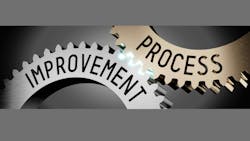Key Highlights
- Implementing value stream mapping helps visualize all steps from customer contact to payment, revealing inefficiencies and waste.
- Eliminating unnecessary processes can drastically reduce cycle times and improve customer satisfaction.
- Engaging staff in process review fosters a culture of continuous improvement and accountability.
- Focusing on value-adding activities ensures resources are used effectively, boosting net profit.
- Adopting lean principles, inspired by Toyota, can lead to sustained growth and competitive advantage in the auto repair industry.
Believe it or not, we have only two months left in 2025. As we look back on the past ten months YTD vs. 2024 YTD, are gross sales up or down? How about net profit — is it up or down? If things are up, then we need to be very thankful for our team and our customers’ loyalty. If our gross sales — and most importantly — net profit, are down, then what are we to do? Well, time to get off our backsides, turn that frown upside, roll up our sleeves and get to work!!! Many may be saying, “What are we to even work on, Greg, as we don’t have the customer demand we had two to three years ago?”
Of course, it is crucial to implement a good marketing strategy in times like these, but this is a crucial time to improve everything we do. Let me start with this. Back in 2013, I had lean collision expert John Sweigart come into my shop over two different weeks to teach me about lean philosophy and fundamentals. As I reflect on that time of great learning, one of the lean tools I learned was value stream mapping.
Basically, a VSM is a visual way of diagramming all our steps from the customer contacting us with, “I just wrecked my car,” to a completed repair and cash going into the bank. In the world of lean, Toyota uses a VSM as a fundamental tool in continuous improvement to identify and eliminate waste. Toyota developed the tool — which it calls a material and information flow diagram — and it is a critical part of the Toyota Production System. A value stream is all the actions (both value-creating and non-value-creating) required from crash to cash for shops. Just FYI: In the last trailing twelve months, Toyota has produced MORE net profit dollars than Mercedes, Ford, GM, Honda and Tesla COMBINED. So, we’d probably better listen to them!
After day two of John’s arrival back in 2013, using some wall space and sticky notes he just started asking questions to the employees who covered each department. The first department was the admin folks and John asked,” What happens when a customer calls saying, "I just wrecked my car?” We then listed out all the steps and processes, from gathering their information to getting the vehicle towed to our shop or driving in for an estimate, etc. We then spent an entire day just going through every department, noting each step and its processes. This included preordering parts, receiving invoices, vehicle check-ins, looking up procedures, blueprinting a vehicle, ordering more parts, checking in parts, etc. We then included all the downstream departments for Body, Prep, Paint, Build, Detail, QC, Delivery, Customer Closeout, Cash in the Bank. We ended up with around 20 steps and 300 processes. Just FYI: by the time we got to step #6-7, I was physically sick to my stomach, because I could visually see all the dumb things we were doing that no customer would EVER pay for. What a terrible current state we had!!!
Now it was time to fix this. We then went through every step and every process to figure out if it was value to a customer or not and whether we could eliminate it or not. Example: Would a customer pay to have basecoat applied to fender? Of course! Would a customer pay us to receive multiple parts invoices from a vendor that brings parts for the same RO over a 3–4-day period? Of course not! By the time we finished discussing and reviewing everything, we cut 20 steps to 12 and 300 processes down to around 100. This was our new future state system to strive for! We literally cut out 2/3 of our waste. When shops take time to do an event like this, all the departments get to see all the stupid stuff they’re doing and then can fully understand there is a much better way to do the work.
Most recent data show that cycle time for the vehicle owner is around 15 days on average across the country. Fifteen days X 24 hours = 360 hours. Without getting into the weeds with weekends, working hours, tech efficiency, etc., actual touch time for each vehicle is around, say, 18 clock hours on average (depending on in-house ADAS calibrations etc.). Granted, we have insurance approvals and parts we are waiting for. Now, just stop and think about it. What has been happening to the car for the other 342 hours we have the vehicle? Well, nothing, and the customer is still without their car! Even though it’s very hard work, when we strive to achieve a better future state, we will have a culture, customer loyalty and profits like no other shop around us, I guarantee!
